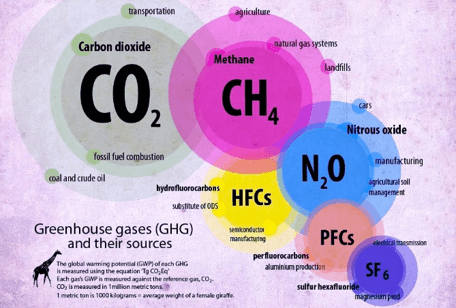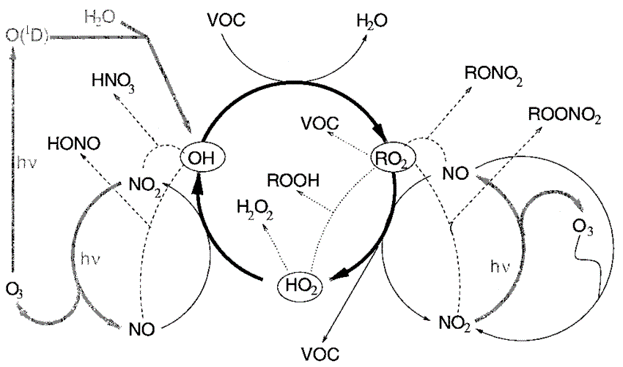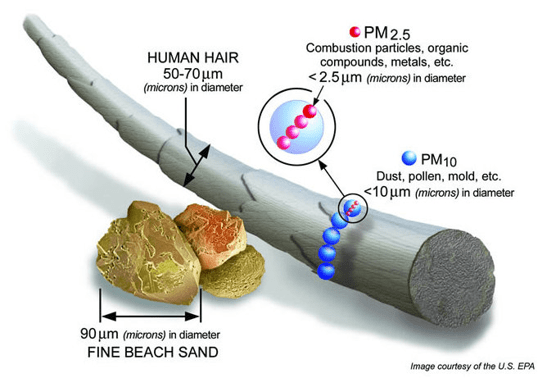Atmospheric Species & Properties
The major greenhouse gases (GHG) and their sources
http://www.change-climate.com/Greenhouse_Gases.htm
Greenhouse gases
Greenhouse gases are species which absorb infrared light and convert it into heat. As such, they contribute to keeping our atmosphere at a temperature that allows for life to happen. However, with excess emissions of those gases from anthropogenic sources mostly, the concentrations of many species are increasing in the atmosphere and causing a global increase in temperature, and consequently a global change in climate.
The main species of interest in this field are carbon dioxide (CO2), methane (CH4), Nitrous oxide (N2O). We measure those with a combination of in-situ (PICARRO G2401 – ICOS netkork), total column (Bruker IFS125 HR – TCCON network) and low cost (SenseAir) samplers.
Complex and varied chemistry involving reactive gases
Adapted from Kirchner et al., JGRA, 2001
doi: 10.1029/2000JD900603
Reactive gases
Reactive gases, as their name suggests, are gases that reacts fairly quickly with other atmospheric species or biological organisms. This trait causes some of them to have negative effects of health (human, animals, plants, trees and crops), and are therefore referred to as atmospheric pollutants.
Other species, such as certain volatile organic compounds emitted by vegetation, have no effects on health; However, their complex chemistry can lead to the formation of pollutants such as Ozone (O3) or secondary organic aerosols. Those aerosols can have varied effect on visibility, solar radiation and therefore climate.
The Cyprus Atmospheric Observatory monitors reactive gases relevant to air quality: carbon monoxide (CO), sulfure dioxide (SO2), nitrogen oxides (NO, NO2 and NOx) and Ozone using reference instruments (Thermo 4#C series).
Aerosols
Particulate matter, also called aerosols, refers to suspended matter (solid, liquid or both) in the atmosphere with a wide range of sizes, shapes and chemical composition. This diversity leads to varied properties on air quality and climate.
Particles below 10 micron (PM10) and below 2.5 micron (PM2.5) have the greatest impact on human health as they penetrate deep into the respiratory system, and can even cross into the blood system for PM2.5.
Aerosols also have a major impact on the climate by either reflecting solar radiation to space (e.g. sulfate aerosols from volcanic eruptions) or absorbing solar radiation (e.g. black carbon from biomass combustion).
The Cyprus Atmospheric Observatory has a wide range of instrumentation measuring aerosol composition (Aerodyne Aerosol Composition Speciation Monitor), size distribution (scanning mobility particle sizer and optical particle counters), reference particulate matter fraction concentration (Thermo 1405-DF TEOM). CAO has also sampled bioaerosols (pollens and fungal spores) in Cyprus since 2018 and is setting up a regional network of such measurements to the Eastern Mediterranean and Middle Eastern region.
Solar flux
The solar and thermal infrared broadband fluxes reaching the Earth’s surface are important components in climatic and environmental studies. These fluxes represent spectrally integrated radiation from about 200 nanometers up to 4 micrometers for the solar spectrum and from 4 to 40 micrometers for the thermal infrared. This radiation value is also directionally integrated over the entire hemisphere (2π steradian). Variability of the radiation fluxes is climatically important parameter because it reflects perturbations of the Earth’s radiative budget due to variability in concentrations and type of atmospheric aerosol particles, gases, as well as cloud cover. In addition, radiation reaching the surface is important for environment and agriculture because it controls the soil evapotranspiration and light availability.
The measurements provide direct sun and diffuse sky spectral integrated radiation; the global solar radiation can be obtained by sum of both. The measurements also provide downwelling from the sky thermal infrared fluxes, while the principle source of this radiation is the earth thermal emission.
The Agia Marina Xyliatou CAO station is equipped with the Kipp and Zonen station that includes:
- a pyrheliometer (CHP1) for measuring direct solar radiation in a field of view of 5 degrees
- a pyranometer (CMP22) for measuring solar radiation integrated over the hemisphere, and
- a pyrgeometer (CGR4) measuring the thermal infrared radiation integrated over the hemisphere
The measurements are conducted with a time step of 2 min. The instruments are calibrated and regularly compared to the reference. The overall accuracy of the measurements is within a nominal error of 5%. The instruments, the data transfer and storage are fully automatic enabling a continuous monitoring.





